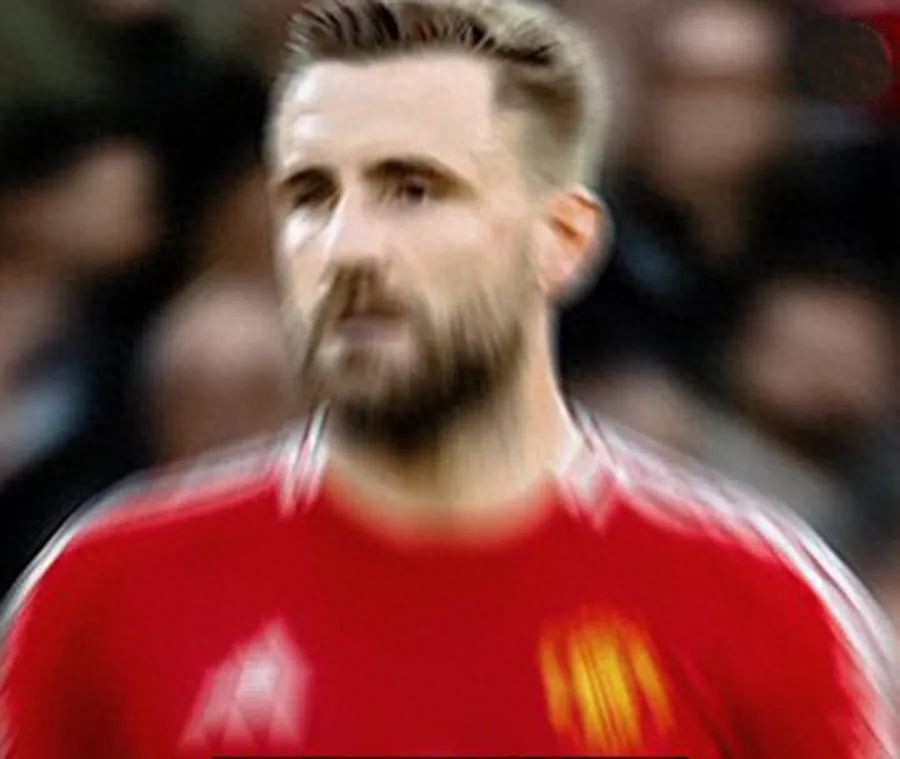Manchester United's Carlos keeps getting injured and the reason is revealed! Nine injuries have been bruised all over the body, not just because of broken legs
Manchester United were almost fully fit ahead of the Manchester City campaign, with the only exception being left-back Luke Shaw. Luke Shaw is injured again, and he claims to be very sad and has struggled with an ongoing injury that has had a hugely negative impact on his career. The stats show that since making his senior debut for Southampton in 2012, the England left-back has been sidelined with injury for 1,685 days, nearly five years, with a record of 75 injury absences. Because Luke Shaw is currently recovering from an injury, and that number is still increasing day by day.

Most of these injuries have occurred during his time at Manchester United, with the most serious of course being a double fracture of his right leg in the Champions League group stage against PSV Eindhoven in September 2015, which was also the longest time he has been injured. According to Premier Injuries, Luke Shaw has suffered 9 different types of injuries during his career.
These included illness, which left 'Carlos Britannica' out for 126 days, including contracting Covid in March 2022. The biggest problems of the 29-year-old's career came from calf, shin and heel problems, which left him out for 491 days, and the second-highest thigh and hamstring strain, which left him unable to play for 436 days.
Luke Shaw has only played in 14 of United's 53 Premier League games since last season, making just three substitute appearances this season. Luke Shaw signed a new four-year contract extension with Manchester United last year until the summer of 2027, but the club is understandably already aggressively scouting new left-backs, with 17-year-old Uruguayan left-back Diego León just a long way set to join and Fabrizio Romano saying he will soon be "here we go".
Luke Shaw has suffered further setbacks around the time of his comeback due to hamstring and muscle injuries. In layman's terms, it is just a comeback and then injured. Premier League sports experts believe that broken bones are a serious injury, but they usually heal well. The bigger problem is that if fragments get into the joint, destroy the joint surface, or in more complex cases, metalwork is needed to stabilize the wound. Shaw needed this surgery, indicating that he had a more severe fracture, but usually, doctors would expect a good outcome.

But was that broken leg the catalyst for Luke Shaw's constant injuries? In fact, United's £30 million gentleman doesn't seem to have been affected by a leg injury since his comeback, especially after almost a year. But this could lead to recurrent muscle damage that kept him out of action.
The recovery period after a fracture can easily lead to severe muscle damage. As the bones heal, recovery is required, gradually increasing the amount of activity until the player's muscle strength is at pre-injury levels and can be returned to team training and games. Residual weakness from previous injuries can also lead to muscle imbalances, increasing the risk of injury to weaker muscle groups. Statistically, the risk of re-injury is indeed greater during this period.
On top of that, if a player is injured again and again, the cumulative loss of body and time will inevitably have a compounding effect, and in a vicious cycle, they may experience problems more often. Just like Shaw's hamstrings and calf muscles, there are obviously big problems.
This is a more common problem with faster players, especially full-backs and wingers, who run farther and more physically demanding than their teammates in the game. Unfortunately, Luke Shaw is an assist full-back.

Luke Shaw's body shape makes him more likely to be a "victim". Manchester United fans called him "Fat Shaw", and the British media once took photos of him with a bloated abdomen during the holiday, and the overweight put a greater burden on his muscles and joints, so the "alien" Ronaldo became an earthling again. Luke Shaw has lost weight in recent years, sometimes even seeing abs, and was once far from injury. However, whenever he performs well and his position is secure, there will be problems, and it can only be because he is "born in sorrow and died in peace".
The same player who once broke his leg, another Manchester United fullback Antonio Valencia, because he is a training maniac, never releases photos of sunny and beach vacations every summer, and only appears in the gym, Da Valen's muscles are far from being comparable to Xiao Neng, so Ecuadorians are not so easy to recur old injuries.
Why does Shaw's hamstring always have problems? Hamstrings account for 24% of all injuries in men's football. According to Premier Injuries' injury expert Ben Denali, 53 players have been sidelined in the top flight this season due to hamstrings, accounting for 42 per cent of all muscle injuries, a figure that hasn't changed much from year to year.
In recent years, there has been a significant rate of hamstring injuries among professional playersbookThe increase, especially the severity of the worsening, almost doubled the average absence per hamstring injury. The reason for this is not entirely clear, but it is likely due to a change in the game. The conclusion from the analysis of GPS data in training and games is that the increase in game speed, sprint distance, and the number of accelerations and decelerations places more demands on the players' bodies. Once there is a problem with physical fitness, it is easy to strain.

Chelsea's other England full-back, Reece James, is in the same league as Luke Shaw. The 25-year-old James' top speed of 36.6 km/h in the sprint makes him a fast horse among Premier League players, and as a right-back, he runs a lot, constantly going back and forth, and has a history of repeat hamstring injuries, which makes him a "glass man" like Shaw.
The most important risk factor for hamstring strain is the old injury, in other words, it is easy to have a second or third injury after one injury...... When sprinting, the hamstring needs to be subjected to tremendous force, usually in its fully extended state, and the injured hamstring can form scar tissue within the muscle, which means that it cannot be stretched in exactly the same way, thus becoming a weakness of the muscle itself. It's like a rope with a crack that is more likely to be pulled off.
Will Manchester United's change of manager affect Luke Shaw? A change of manager is like a change of knife for a team, but it can have a negative impact on injured players! Because players may be asked to adopt a new style and rhythm of the game, this places different physical demands on their bodies that can have a ripple effect before they get used to it. Professional players are now well protected, but they have been exercising close to their physiological limits, and a little more burden can be the last straw that breaks the camel's back.
A few days after Ruben Amorim took office, Shaw was injured again, a coincidence and an inevitability. Changes in training and playing styles, in the first few weeks and months, have a big impact on injuries, which is a recognised factor. As a result, United are thought to have had to bring in a new first-choice left-back, and Shaw is 29 years old, and his fitness will only continue to decline, and injuries may be more, not less.

Ironically, it's no coincidence that every time United bring in a new left-hand striker, Luke Shaw plays well. England Carlos could initially lose his position because of the new arrival, which instead gave him time to get his body back to the best level. On the contrary, if he is in a hurry and plays "closed" as rumored to play in order to play in the European Championship final this summer, then his fragile hamstrings will naturally not be able to withstand it.


Wonderfulshortvideo
User PlaymakerHub has posted a video.








 Links
Links
 Contact
Contact
 App
App


